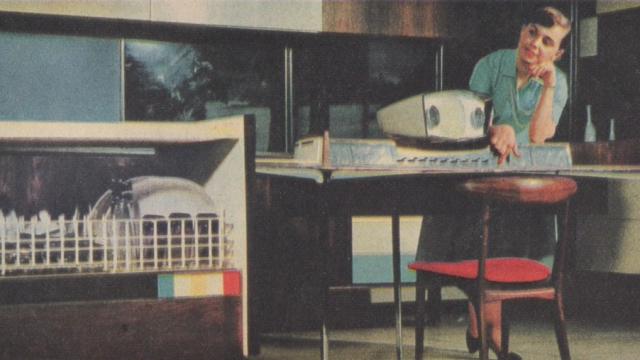In July 1959, the magazine Look ran an article describing the “miracle kitchen” of the future, ostensibly about the amazing advances that Americans would see in their own homes. In reality, it was part of a much larger propaganda battle of the Cold War — and it involved a proto-roomba.
Last year we looked at the American National Exhibition in Moscow that took place for six weeks during the summer of 1959. It was part of a cultural exchange between the US and Soviet Union. The Soviets brought an exhibition to New York for six weeks and the Americans brought an exhibition to Moscow. The long and the short of it? The Soviet exhibition showed off areas where they were ahead technologically: Heavy industry equipment and rockets. Whereas the American exhibition showed off where they were ahead: Cars, TV sets, and kitchens. Lots and lots of kitchens.
You can read about the American National Exhibition in my post from last year, but today we have the full photo spreads that accompanied the 1959 issue of Look. It’s interesting to see what was being sold as “the future” to American consumers. But perhaps more fascinating, there were some photos (like the one at the bottom of this post) that were left out.
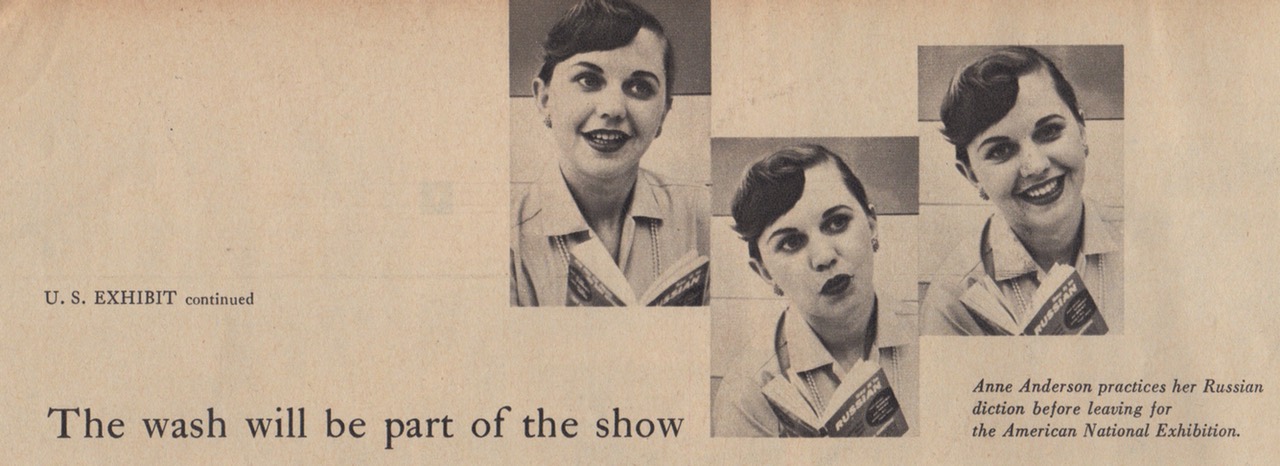
The tireless ambassador on hand at the RCA/Whirlpool “miracle kitchen” exhibit was Anne Anderson, a woman who grew up in Argo, Illinois but whose Ukrainian parents taught her to speak Russian.
Working 13 hours a day, Anderson was one of 75 young Americans who travelled to Moscow for the exhibit. And while one former ambassador I spoke with said that roughly half of the “student guides” were from the CIA and RAND Corporation, there’s no evidence that Anderson was a spy.
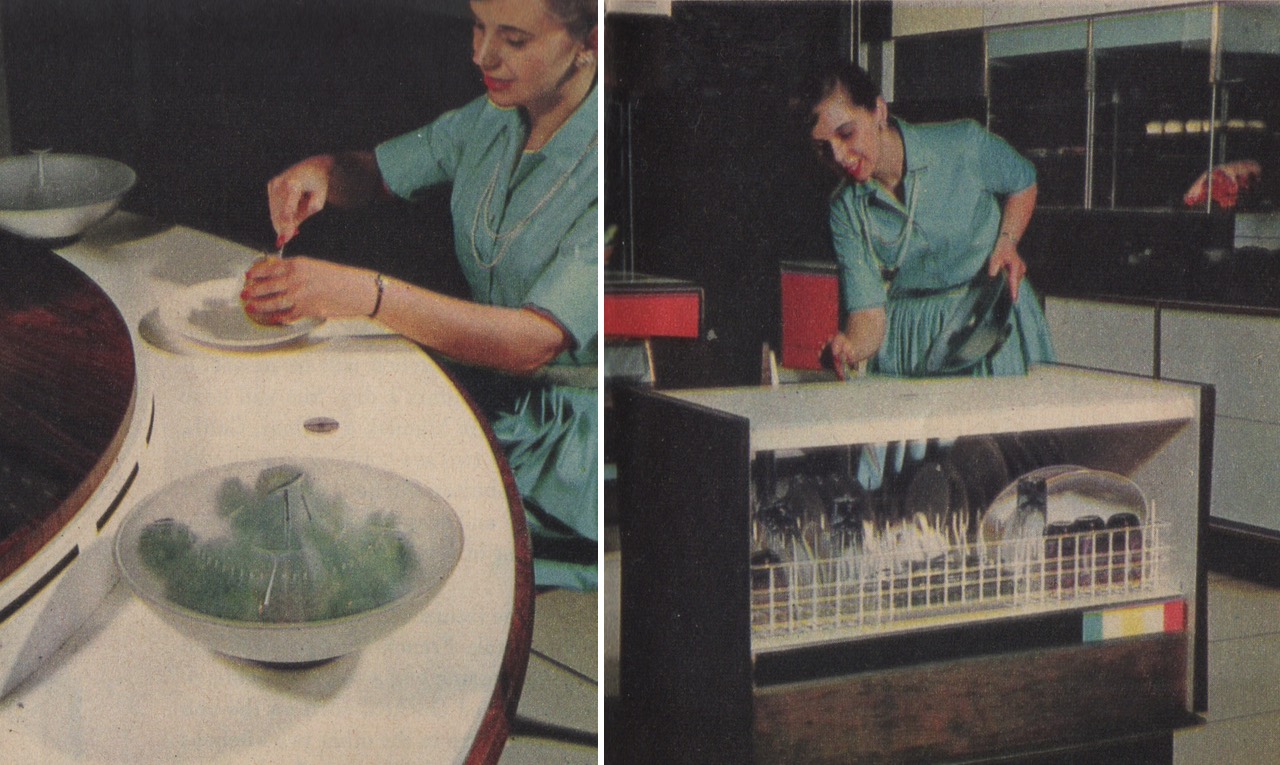
Photo on the left by Bob Lerner, scanned from Look magazine:
Mrs. Anderson begins a salad on work surface of the free-standing range. The oven, which operates on the microwave principle, can bake a cake in three minutes.
Photo on the right:
She presses a button, and the dishwasher “walks” an electronic track to the dining table. Kitchen also has a robot floor cleaner and automatically adjustable sinks. By pressing buttons, Anne can prepare a complete meal without leaving the kitchen’s control panel.
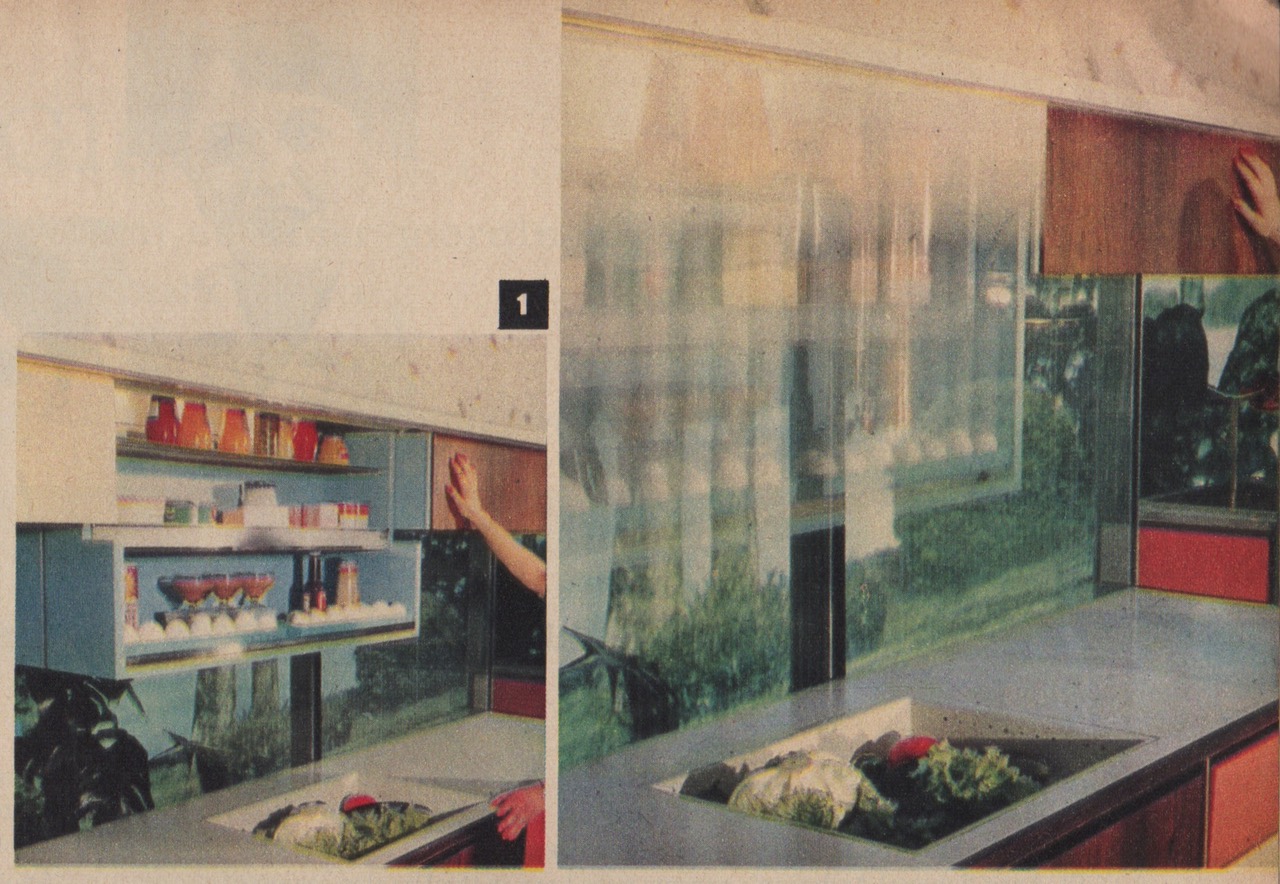
The magazine also showed off the automatic, refrigerated cabinets of tomorrow:
A touch of the hand brings a refrigerated compartment to working level. Vegetable sink is located just below. The experimental kitchen has closed-circuit TV, air conditioning and a controlled system of coloured lights.
You can actually see the appliances in action during this 13-minute promotional film, originally shown on 16mm:
From the film:
Welcome to the RCA/Whirlpool Miracle Kitchen. In this kitchen you can bake a cake in 3 minutes. And in this kitchen the dishes are scraped, washed and dried electronically. They even put themselves away. Even the floor is cleaned electronically. So welcome to this wonderful new world of cooking, cleaning, and homemaking.
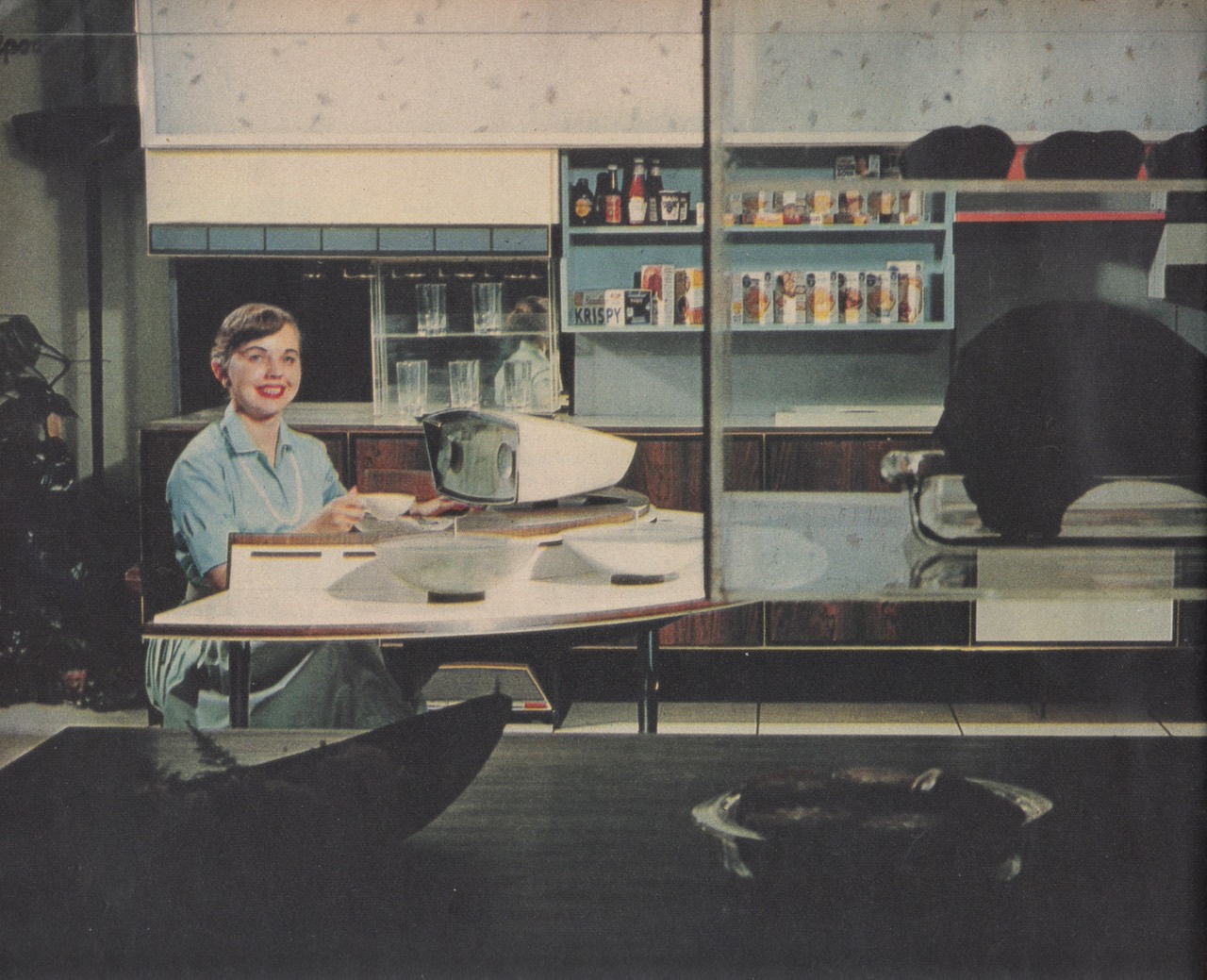
The computer was the center of the entire operation, as we can see from the photo above, which featured Anderson seated in front of it.
From the film:
This is what we call our planning center. And this is the push-button control panel. In other words, this is the heart and the brain of the RCA/Whirlpool Miracle Kitchen. On the control panel we have a series of buttons that operate various parts of the kitchen by a process even more simple than dialling your old fashioned telephone.
So how did the proto-Roomba and the moving dishwasher actually work? It wasn’t by way of computer control. I spoke with Joe Maxwell, a man now in his 80s, who helped design the Miracle Kitchen in the 1950s while working for the design firm Sundberg-Ferar in Detroit.
“They had a two-way mirror with a person sitting behind it that could see the room,” former designer Joe Maxwell told me over the phone. “And they radio-controlled the vacuum cleaner and the dishwasher.”
So yeah, it was a fake. But it was sold to audiences as being just around the corner. Curiously, there’s one photo that didn’t make its way to the magazine article that Americans saw that summer:
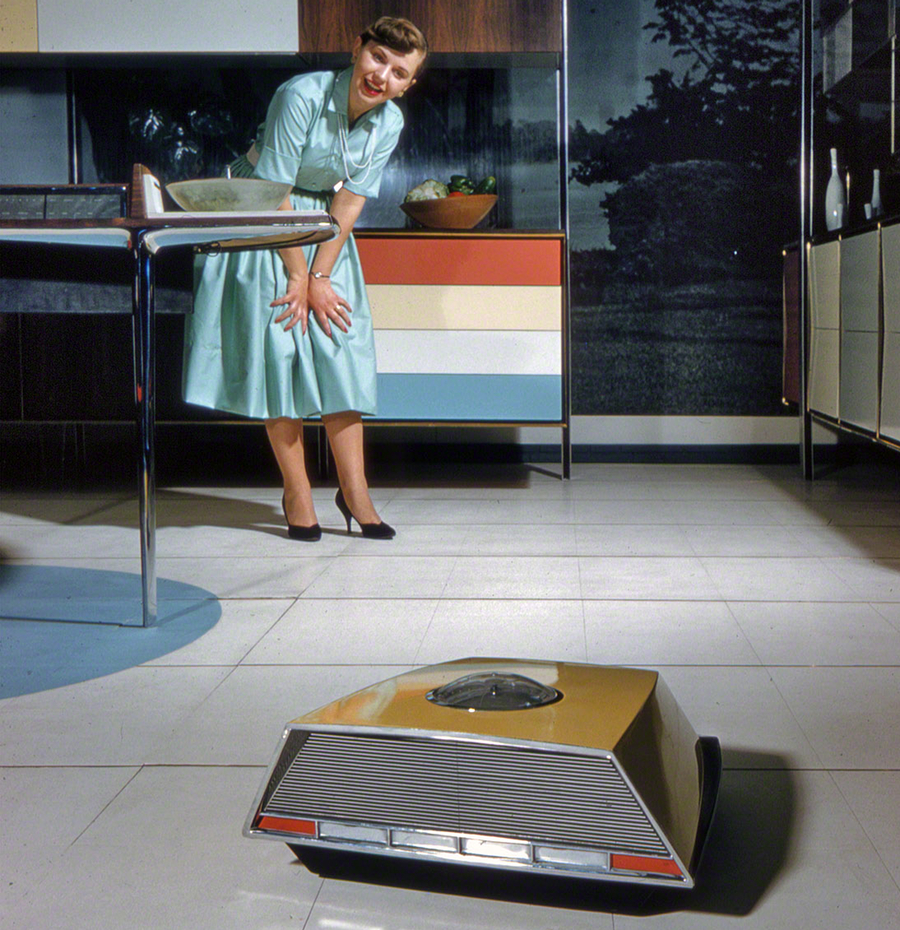
Photographed by Bob Lerner, the only place to see this photo is at the Library of Congress. But why was something like the autonomous floor cleaner left out of this glossy photo spread? One can only speculate. To modern eyes, it’s by far the coolest photo of the shoot.
To the Soviets who had little idea what an actual American home looked like, this Miracle Kitchen of tomorrow was promoted as something that was ready to hit stores in the near future. But perhaps this photo was just a little too unbelievable even for the most techno-utopian audiences of the late 1950s.
